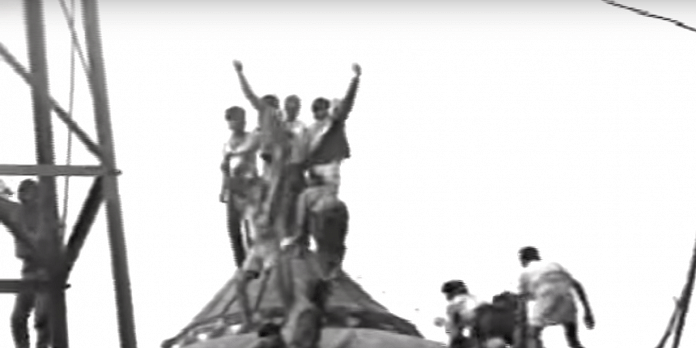A total of 553 documentary exhibits have been submitted to the court, running into 8,000 pages. The SC registry accepts video evidence in CD format.
New Delhi: The appeals in the Ram Janmabhoomi-Babri Masjid dispute have been pending before the Supreme Court since 2011. Although the apex court is set to hear to the case in two weeks, one issue that has been holding up the trial is likely to resurface — litigants in the case have filed documents that run into thousands of pages, making it a nightmare for the registry to process it.
In fact, Chief Justice of India Dipak Misra, who is heading the bench in this case, said the judges would need a decade just to read all the paperwork.
The hearing in 13 appeals filed against the 2010 judgment of the Allahabad High Court that mandated a three-way division of the disputed 2.77-acre site is likely to begin on 14 March.
Video evidence on CDs
Interestingly, the pile of evidence also features two video cassettes apart from the documents – ‘Ayodhya December 1992’, prepared by Jain Studio in Delhi, and another tape with archaeological evidence of the disputed site being the Ram Janmabhoomi.
Video evidence was submitted in the form of cassettes before the Allahabad High Court, and the parties have now submitted to the apex court registry in a CD.
The Supreme Court generally does not look into evidence directly, but only looks into questions of law brought before the high courts. But the controversial Ayodhya case has left the apex court with no choice but to re-examine the documents.
While the registry accepts video evidence in the form of CDs, information on the internet has to be typed out and printed on paper. The court also asks for multiple copies of documents, depending on the number of judges hearing the case.
Documentary exhibits
There are about 533 documentary exhibits, running into 8,000 pages. These documents include ancient and medieval texts in Urdu, Sanskrit, and Persian.
Among the documents presented by the parties as evidence for the site being Lord Ram’s birthplace is a copy of the Bhagavad Gita published by Gita Press, Gorakhpur; ‘Geetawali’ and ‘Ramcharitmanas’ by Goswami Tulsidas; and the Valmiki Ramayana.
Historical texts like ‘Ayodhya’ by Hans Baker features prominently on the list of documents, as do English translations of ‘Ayodhya ka Itihasa Evam Puratattva: Rig Ved se Ab Tak’ by S.P. Gupta and T.P. Verma, and ‘Sri Ram Janmabhoomi ka Pramanik Sachitra Itihasa’ by Radhey Shyam Shukla.
The pro-Babri Masjid parties have filed a photocopy of the title page of the Baburnama, translated by Yugjeet Naval Puri. Apart from that, a book titled ‘Ram Janmabhoomi Babri Masjid Satya Kya Hai’ and a Dictionary of Islam written by Patrick Thomas Hughes are on the reading list for judges.
Many maps and land records of Faizabad dating back to 1893, and several inquiry reports of revenue officers and district magistrates are also among the documents.



